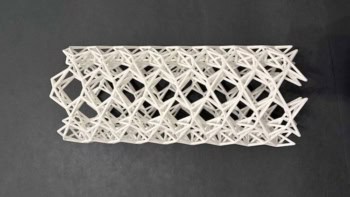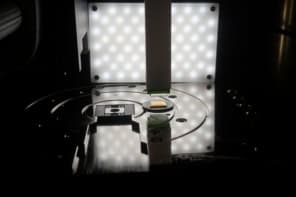New experiments on the reflectivity of high-temperature superconductors could help to solve the mystery of how these materials work. Dirk van der Marel of the University of Groningen in the Netherlands and colleagues found that a cuprate superconductor became ‘bluer’ when the material was cooled below its ‘transition temperature’. This indicates a change in the amount of energy absorbed by the superconductor, and could help to explain the origin of superconductivity in this material (H Molegraaf et al 2002 Science 295 2239).
Superconductors are materials that lose their electrical resistance below a certain temperature. This phenomenon arises when electrons overcome their mutual repulsion to form pairs, which do not experience electrical resistance. BCS theory successfully describes the behaviour of many superconductors, in which electrons gain the energy they need to pair up through interactions with vibrations of the crystal lattice. But physicists are unsure how electrons pair up in high-temperature – or cuprate – superconductors, which were only discovered in 1986.
van der Marel and colleagues studied a high-temperature superconductor made of bismuth, strontium, calcium, copper and oxygen – known as Bi-2212 – which has a superconducting transition temperature of 88 kelvin. By analysing the light reflected from the material above and below 88 kelvin – that is, in its normal and superconducting states – the researchers could tell which frequencies of light it absorbed. The energies of these photons are related to the binding energy of the electron pairs in the superconductor.
As the sample of Bi-2212 was cooled below its transition temperature, the team found that the light reflected from it shifted towards higher frequencies and away from the infrared region of the spectrum. This means that the material absorbs more infrared light – that is, photons with lower energies – when it is in its superconducting state.
According to van der Marel, this suggests that the electrons in Bi-2212 pair up because they have the lowest kinetic energy in this arrangement. He believes that this could lead to a stable superconducting state even if the electrostatic repulsion between two electrons tends to push them apart.
If this shift of ‘spectral weight’ occurs in all high-temperature superconductors, it would prove that the BCS mechanism is not the only way to achieve superconductivity. But van der Marel emphasizes that this is not yet clear. “We are just at the beginning of this type of experiment,” he told PhysicsWeb. “At the moment we can’t say whether this is a generic property of all cuprate superconductors or a peculiarity of the Bi-2212 system.”



